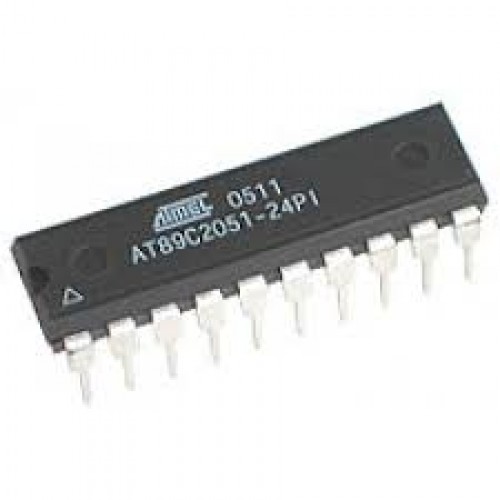Programator Atmel At89c2051

Tutorial about how to program the family 8051 chip AT89C2051 for source code and more infos check our website.
Chasing cars mp3 song download. Frequently Asked Questions • • Creating your mix To the right of each individual track, you can use the 'Mute' button to mute that track, or the cursor to adjust its volume. If you have any doubts about your custom track, don't worry, you can always customize your Backing Track afterwards. Adding to your cart Click on the 'Add to Cart' button and proceed to the payment of your order.
The Atmel AT89C2051 is a low cost microcontroller in a 20-pin DIL package. It runs MCS-51 (commonly termed ‘8051’) code. It works from 2.7V to 6V at anything from 0 Hz up to 24 MHz. It has 2K bytes of Flash memory to hold the program and 128 bytes of RAM. It has 15 I/O lines, a UART, an analogue comparator and two 16-bit timer/counters.
I came across the chip as it’s often used in cheap 7-segment clock kits such as this one from I wanted to reprogram the chip so I could use the kit as a stopwatch/timer instead of a regular clock. Of course I could have bought a programmer to do the job, but reading the chip’s data sheet it seemed straightforward to do the programming with an Arduino – and I thought it would be a fun project to do that. The chip is programmed a byte at a time by setting up each byte on 8 of the chip’s I/O lines and then pulsing some of the other I/O lines to ‘burn’ the byte to flash memory and move on to the next byte to be programmed. You can also read the existing program out of a chip (unless a read-protect bit has been set) and there are special ways of pulsing the I/O lines to erase the whole chip and so on.
The only tricky thing is that one pin has to be raised from the nominal operating voltage of five volts up to twelve volts during programming – the challenge was working out the easiest way to do this using an Arduino. So I decided to use an Arduino Mega 2560 for this project. A Uno doesn’t have quite enough I/O to do the job properly, and the Mega 2560’s double row of I/O pins makes routing the connections to the chip simple as the chip can sit directly over the double-row connector. I decided to use a charge pump (voltage multiplier) running off the Arduino’s five volts to generate the programming voltage – that seemed cleaner than needing a separate twelve volt supply.
It just uses a few diodes and capacitors and relies on the Arduino pulsing some of its I/O lines to drive the voltage multiplier. A couple of zener diodes clip the voltage down to exactly 5V or 12V and a couple of transistors, also switched by the Arduino, select between either of those voltages or 0V to drive the pin on the chip. I designed a PCB using the free KiCad package.
Of the circuit diagram, and here is what KiCad produces as a picture of the design. In the picture it looks like the chip to be programmed is soldered straight into the board, but of course in reality a ZIF socket is fitted in that position so that the chip(s) you are programming can be quickly swapped. That picture wrongly shows the tracks on the top of the board – I design them that way for home production as the transfer process mirror-images the tracks so that they’re correct for the back of the board.
If you fancy making one of your own, it would be quite straightforward to do it on strip board – like I say most of the pins of the chip just connect direct to the Arduino pins that the chip sits over. If you want to etch your own PCB,. Here are a couple of snaps of the prototype board. You can see I didn’t bother to crop back the board edges! And this is what it looks like when docked on top of the Arduino Mega 2560.
So that’s about it for the hardware. I’ll make a separate post about the Arduino sketch that does the work of programming the chip, and the PC program that talks to the Arduino to send and receive hex files. Posted by Posted in, Post navigation.
Write something about yourself. No need to be fancy, just an overview. No Archives Categories. Copyright tips We do not store any content of the torrent,only gather and index the metadata such as file name,file size, magnet link from the DHT network. LEDpod 50 Spec Sheet (PDF, 2.5mb) LEDpod 50 Installation Instructions (PDF, 164kb) KLIK LEDpod Installation Tips (PDF, 4.5mb) LEDpod 50 IES Files (ZIP, 20kb) KLIK USA Driver Info. Infostart.torrentBT种子创建于2017-06-29 09:58:55,文件总大小1.66 GB,共包含5403个文件,被下载71次,下载速度极快,银河磁力提供infostart.torrent的磁力链接下载与迅雷链接下载。. Ikonki dlya podsistem 1s. Zolotoy pesok dlya lyubimogo [V. Kopejka] on Amazon.com. *FREE* shipping on qualifying offers.
Yeah, I think relays with their slow operation and contact bounce won’t work with my existing code. You could try extending the delays after the VPP::setVoltage() statements – instead of delayMicroseconds() alter them to delay() That uses milliseconds instead of microseconds so a thousand times slower. Even a small fast relay probably needs at least 20 milliseconds or so to switch, so I wouldn’t go below delay(20) anywhere.